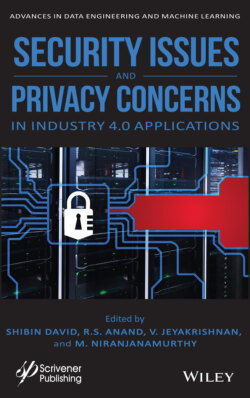Читать книгу Security Issues and Privacy Concerns in Industry 4.0 Applications - Группа авторов - Страница 34
2.1.2 The Fourth Industrial Revolution
ОглавлениеThe digital transformation of production, manufacturing, and several other related industries that value process creation have led to the fourth industrial revolution [9], is a new phase in the organization and control of chain value interchangeably [7]. Industry 4.0 is concerned with those areas that are not usually classified such as smart cities where industry applications cannot perform their own rights [8]. In the first industrial revolution, the advent of mechanization, water, and steam power made a huge and positive impact on the traditional industry. In short, the first revolution boosted industrial production; the second industrial revolution revolved around using electricity, mass production, and assembly lines. Industry 3.0 was the revolution of electronics, IT systems, and automation at the industrial level that led to Industry 4.0, which is [10] associated with the cyber-physical system.
The Industry 4.0 briefly elaborates the automation growth trend and data exchange in industrial technology as well as processes within the manufacturing industry, such as Artificial Intelligence (AI), Cloud Computing (CC), the Internet of Things (IoT), the Industrial Internet of Things (IIoT), Cyber-Physical Systems (CPS), Cognitive Computing, Smart Manufacture (SM), and Smart Factories (SF). The mentioned automation creates individual manufacturing systems; the machines in industries are augmented with multiple sensors and network connectivity to monitor an entire process of the production and make decisions autonomously [12]. However, augmentation of machines and wireless connectivity can highly advance industrial and manufacturing systems, create robust response times, and allow for a near real-time machine-to-machine communication. Nevertheless, the revolution relates to the digital twin technologies; these technologies make real-world virtual versions of installations, processes, and real-time applications that can enhance testing to make cost-effective decentralized decisions.
The virtual copies allowing the cyber-physical machine to communicate with each other also create a real-time data exchange for human staff and automation interconnectivity between transparent information, processes, and technical assistance for industry 4.0 manufacturing [11]. Industry 4.0 demonstrates the business models, for example, offline programming for arc welding, take adoptive controls, and the overall processes of product design architecture and automotive industry 4.0 businesses implementation as well as a variety of smart factories all around the world.
